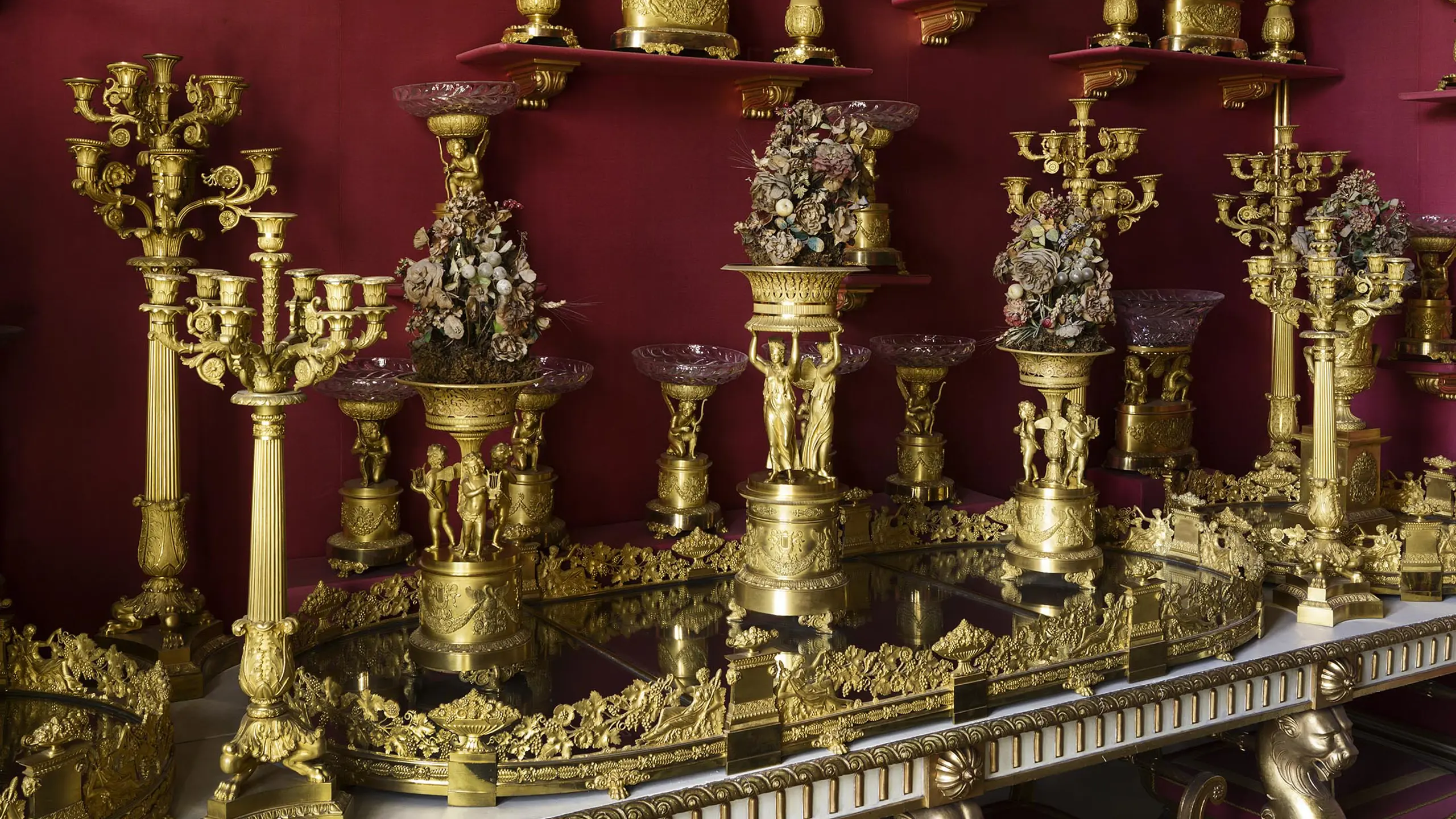The Bronze Room (room 20, closed)
Even though the Bronze Room is small, the beautiful gilded bronze service here is both lavish and exceptional.

A table decoration worthy of a king
The bronze service as table decoration and museum piece
The lavish gilded bronze service, which fills up most of this room, was created during the 1820s. At the time, it was used as a table decoration at galla banquets – a practice dating back to the Imperial Court of Napoleon I. In 1881, Master Brewer Carl Jacobsen – the founder of the world-renowned Danish brewery Carlsberg – provided the funds to enable the museum buy the bronze service you see here for the museum’s collection. He also paid the cost of renovating the room to display the service.
One of three magnificent bronze services
The bronze services here at Rosenborg Castle was a wedding gift from Frederik VI to his daughter Caroline and her husband, Ferdinand, Hereditary Prince of Denmark, who was Christian VIII’s brother. Frederik VI and his consort, Queen Marie, had eight children, but only two daughters outlived their parents. The other children all died very young. C hristian VIII was next in line to the throne as the son of Christian VII’s half-brother, Frederik, Hereditary Prince of Denmark.
Frederik VI also gave a bronze service to his other daughter, Vilhelmine, on her wedding to Frederik (VII). This set is now at Glücksborg Castle in Germany.
A similar bronze service with miniature versions of some of Bertel Thorvaldsen’s most famous marble sculptures is on display at the Amalienborg Museum in Christian VIII’s Palace.
Objects in the room
If you are at the museum, you can admire the fascinating objects in the room and read more about them below.
The descriptions are brief and generally do not include images. They are intended as an added resource if you would like more detailed information about an item, such as who made it, its origin and its meaning.